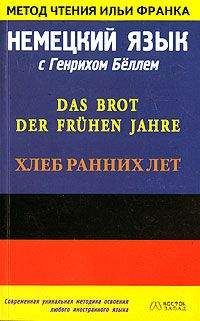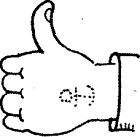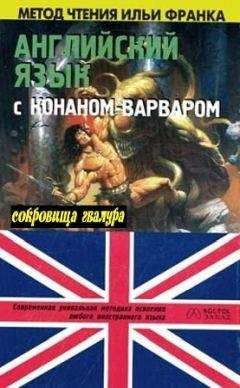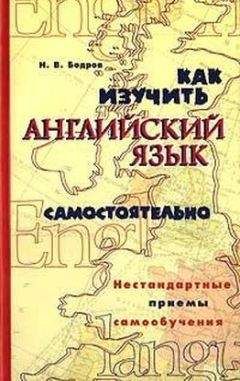Нина Пусенкова - Английский язык. Практический курс для решения бизнес-задач
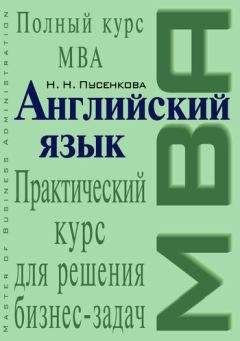
Все авторские права соблюдены. Напишите нам, если Вы не согласны.
Описание книги "Английский язык. Практический курс для решения бизнес-задач"
Описание и краткое содержание "Английский язык. Практический курс для решения бизнес-задач" читать бесплатно онлайн.
Задача данного издания – познакомить учащихся с современной финансово-экономической терминологией. Первая часть книги в большей мере посвящена вопросам управления, вторая – финансовой проблематике. Темы занятий в основном соответствуют тематике курсов, которые преподаются в большинстве школ бизнеса. Уроки содержат тексты из самых разнообразных профессиональных источников и упражнения, позволяющие студентам закрепить пройденный материал. В конце учебника приводится словарь необходимой лексики примерно из 1000 слов и выражений.
Для студентов бизнес-школ, языковых, финансовых и экономических вузов, а также для всех, кто хотел бы усовершенствовать свой деловой и финансовый английский.
Ли Якокка изменил принципы работы компании с дилерами, наладив сотрудничество между ними и сбытовиками «Крайслера». Он успешно использовал новаторский маркетинговый прием – продавал автомобили фирмам, сдающим машины напрокат, тем самым обеспечивая себе косвенную рекламу среди клиентов, которые брали их в аренду.
Веря в то, что все производственные операции сводятся к людям, продукту и прибыли, причем на первом месте стоят люди, Якокка сколотил надежную команду единомышленников. Он понимал, что для успеха компании необходимо построить действительно высококачественную машину, установить на нее конкурентоспособную цену и обеспечить хорошее послепродажное обслуживание – только тогда покупатели устремятся в демонстрационные залы.
Ли Яккока разработал и претворил в жизнь «Программу качества», донеся до всех сотрудников, что качество автомобилей теперь является первоочередным приоритетом «Крайслера» и меры по улучшению качества одновременно способствовали повышению производительности труда. Ли Якокка позаимствовал японскую систему «точно в срок» для сокращения издержек производства и уменьшения запасов.
Он рационализировал структуру концерна, продав подразделение по производству танков, единственное подразделение концерна, которое генерировало прибыль, поскольку считал необходимым сфокусироваться на производстве профильной для «Крайслера» продукции и поскольку компании срочно были нужны наличные для расчетов с поставщиками.
Ли Якокка добился активного участия рекламного агентства «Кенион энд Экхард» в создании новых моделей автомобилей и подписал с ним пятилетний контракт вместо стандартных краткосрочных контрактов, распространенных в автомобильной промышленности. Агентство разработало отличный маркетинговый прием – гарантийный возврат денег за купленный автомобиль после 30 дней пользования, если он по какой-то причине не понравится покупателю.
Важнейшим достижением Ли Якокки можно считать его обращение к правительству США с просьбой выступить гарантом займов компании у банков – это был единственный способ спасти компанию от банкротства. В тот период правительство, деловые круги и население все более отчетливо понимали неэффективность государственного вмешательства в экономику, и большой популярностью пользовался лозунг «Никаких федеральных подачек! (handouts)». Ли Якокке удалось доказать Конгрессу, что банкротство «Крайслера» привело бы к потере десятков тысяч рабочих мест и обошлось бы налогоплательщикам в 16 млрд долл. в виде пособий по безработице, социальных выплат и других расходов и что Америка не стала бы лучше без компании «Крайслер».
В 1982 году «Крайслер» впервые за многие годы заработал прибыль, а в 1983 году досрочно погасил весь банковский заем. Это произошло ровно через пять лет после того, как Ли Якокка был уволен из «Форда».
Источник: по материалам книги Ли Якокки «Карьера менеджера»
Lesson 6
Corporate Strategy
Read and translate the text and learn terms from the Essential Vocabulary.
Carly’s Challenge
The relief at Hewlett-Packard Co.’s headquarters was palpable. On Nov. 16, 2004, just 96 days after its biggest quarterly earnings miss in more than a decade, HP celebrated the company’s 2004 Q4 results. The 66-year-old technology giant had rebounded nicely, reporting a 27% hike in profits, to $1.1 billion, while sales jumped 8%, to $21.4 billion. The market was happy, and HP’s stock rose a solid 8%.
But the next day, cheers gave way to sighs. Certainly the company improved its performance from the disastrous third quarter. But investors were quick to discover the vulnerabilities behind the cheery numbers. HP continued to rely heavily on its superstar printing business while its mammoth PC and server businesses struggled to generate profits. Much of the profit growth stemmed from cuts in R&D, and from a lower tax rate. Without these savings, HP’s profits would have grown only 10% – not 27%.
It has been more than five years since Carleton S. Fiorina hit town with bold plans to reinvent the Silicon Valley icon, and she’s still struggling. The charismatic CEO has zealously pursued a bigger-is-better strategy, with hopes of creating a technology world-beater. Thanks largely to its $19 billion acquisition of Compaq Computer in 2002, HP has doubled its sales in the past five years and become a competitor in an unprecedented number of markets.
Yet in too many of the businesses, HP is losing steam. Sure, its $24 billion printing division generates impressive profits. But the rest of HP is an underachiever. In personal computers, it’s no match for Dell. And HP is too often outgunned by IBM in the global markets for corporate computing. Fiorina’s team faces steep operational challenges as it tries to cope with HP’s huge portfolio of businesses. «It requires entirely different strategies to compete with Dell and IBM,» says analyst Bill Shope of J.P. Morgan. «Judging by HP’s performance, they haven’t been able to do either.»
Analysts estimate the stand-alone value of its printing business as slightly less than the entire company’s $61 billion capitalization. That means that the rest of HP’s businesses, which generate $56 billion in revenues, are being valued at next to nothing.
Still, HP is hardly insolvent. Its 2005 profits are expected to reach $4.5 billion, with sales climbing 6%, to $85 billion. Trouble is, HP has earned a reputation of not meeting expectations. Over the past 20 quarters, HP has missed analysts’ profit estimates seven times. «(HP is) trying to do 100 things. It’s hard to do everything well,» says Joseph Tucci, CEO of EMC Corp., a rival in the storage business.
Louder Drumbeat. Investors aren’t impressed, and Wall Street is insisting on a simple solution: break the company up. The CEO strongly resists the idea. The BoD continues to discuss such a move, but directors support Fiorina’s commitment to hold the company together. Still, the calls to split apart the consumer and corporate businesses, or to sell off the printer division, are bound to grow if she fails to light a fire under HP’s underperformers. The breakup options could certainly appeal to investors. Analyst Steven Milunovich of Merrill Lynch estimates that the total value of HP’s businesses could increase by 25% to 45% if it were split into printing and nonprinting operations. The printing business could expand its market and partner with HP’s computing rivals, including IBM and Dell.
And managers of the computing company, with its divisions in software, PCs, servers, and tech services, would have to struggle to make profits. No longer subsidized by the printer division, they would have no choice but to perform. Merrill assesses that the spin-off would create $15 billion to $27 billion in incremental value.
For now, Fiorina continues to bet on bulk. She contends that HP’s scope pays off in added sales and lower costs. Consumers and corporations, for example, often shop for both printers and computers at the same time. And HP does benefit from economies of scale. After the Compaq merger, the company cut $3.5 billion in annual expenses, in part by squeezing components suppliers for lower prices.
Broad Reach. Fiorina insists that HP needs the broadest possible scale to capitalize on her vision of technology’s future. A former executive at AT&T, Fiorina has become a leading evangelist for the converged digital world. She describes how the Information Revolution will transform corporations and electrify entertainment, with the whole world becoming «digital and mobile and virtual and personal». In line with this vision, she has assembled a giant corporation that is far broader than Dell or IBM. HP makes everything from calculators and cameras to supercomputers, and competes with Sony, Canon, Samsung, EDS, just about everyone in tech.
Fiorina carries the solid Q4 results into an analysts’ day in Boston on Dec. 7. This eases the pressure for her to take dramatic action. But the latest numbers merit a second look. During the period, HP’s tax rate fell to 15%, down from 19% a year earlier. In addition, R&D decreased to 4% of sales, down from 4.6% the year before. This pumped up profits. Investors who are excited about a sustained, profitable growth from HP should be wary. «You can’t simply keep cutting R&D and the tax rate to boost profits,» says analyst Richard Chu of SG Cowen Securities.
HP acknowledges the point. CFO Robert P. Wayman said that the decline in the tax rate was primarily a result of the favorable resolution of a state tax audit and that the tax rate would probably rise to 20% in the coming year. HP officials have said that they expected R&D spending to diminish, because of the elimination of redundancies from the Compaq merger and its efforts to place fewer, more focused research bets.
As analysts appraise HP’s Q4 numbers, other questions arise. During the period, its receivables surged by $1.8 billion, to $10.2 billion. HP defends the increase saying that it shipped extra units to support several product launches.
Unwieldy System. Still, HP suffers from poor positioning. In its PC business, HP runs two systems that often operate at odds with each other. One is a direct-sales, built-to-order model to compete with Dell, which carries virtually no inventory. The other is HP’s traditional, higher-inventory model for units that it ships through its sales partners. Operating in both worlds leaves HP doubly exposed.
Yet if the company pushes more business into direct sales, it risks angering HP’s traditional retailers and resellers. And HP needs their help to sell its printers and ink. A break-up would help to resolve this dilemma, freeing the computer division to adopt the Dell approach. For now, HP keeps both systems intact – and loses ground in PCs. Following the Compaq merger, HP briefly rose to the No. 1 in PCs. But the company slipped to No. 2, with 15.7% share, behind Dell, which has an 18.3% share. Operating margins in 2004 were a meager 0.9%, miles behind Dell’s 8.8%.
HP also appears overmatched in its rivalry with IBM. Big Blue has put together a more lucrative portfolio of corporate computing products. They span everything from software to servers to chips, and they generate overall 11% operating margins. By comparison, HP’s non-printing businesses managed operating margins of 3% in 2004. The disparity is especially clear in the profit-rich software business. In IBM’s third quarter, its software biz generated $3.6 billion and operating margins of 25%. HP reported $277 million in software sales for its Q4, posting a small operating loss.
At times, HP’s push for synergies has gotten in the way. Take storage. After buying Compaq’s market-leading storage unit, HP integrated it into its enterprise group, which also includes servers and software. Along the way, HP fired many storage-sales specialists in favor of sales reps with a broad knowledge of HP offerings. Key storage execs followed them out the door. Soon, competitors such as EMC began to nab customers from HP. Storage revenues dropped 5% in 2003 and a further 7% in 2004. Even loyal HP customers chose EMC when buying storage gear earlier this year. Although HP recognizes the error and is hiring back storage specialists, it cautions that a turnaround in storage could take time.
Other customers have even more serious complaints. For instance, HP has developed customized Web sites for customers where they can place and manage orders. However, these business-to-business sites have frequently cratered – erasing accounts, losing orders, and shipping the wrong products. An HP sales representative complained to his superiors about the disappearance of 70 customers from the B2B systems: «I can’t even evaluate how many relationships… have been burned with this new site.» HP has no comment on the B2B issue.
Patchwork Quilt. Similar problems have hamstrung HP’s efforts to compete with IBM in large corporate computing deals. The technology supporting HP’s corporate-computing sales remains a patchwork of overlapping and poorly fitting systems despite recent efforts at streamlining. HP sales reps spend only 30% to 35% of their working time with customers and partners, compared with 55% to 60% at well-run organizations. «I would stress how difficult it is to do business inside HP,» says Paul Gerrard, HP’s former vice-president. «There are terrible inefficiencies in the system.»
To pull off a big sales deal at HP often requires delicate diplomacy. Putting together a package involving servers, printers, and software, a sales rep has to reach an agreement with each division. If one unit is unwilling to lower its price, the whole deal can fall through. The company lacks an effective process to resolve conflicts. Fiorina helps broker some deals, but she has time only for the biggest accounts.
These problems have fueled calls within HP for hiring a trouble-shooting operations chief. Fiorina is categorically against a COO, saying that a strong CEO should keep a grip on operations. Many analysts rate Fiorina very highly as an inspiring speaker and salesperson, but either lacking the skills or stretched too thin to solve HP’s operations challenges.
Подписывайтесь на наши страницы в социальных сетях.
Будьте в курсе последних книжных новинок, комментируйте, обсуждайте. Мы ждём Вас!
Похожие книги на "Английский язык. Практический курс для решения бизнес-задач"
Книги похожие на "Английский язык. Практический курс для решения бизнес-задач" читать онлайн или скачать бесплатно полные версии.
Мы рекомендуем Вам зарегистрироваться либо войти на сайт под своим именем.
Отзывы о "Нина Пусенкова - Английский язык. Практический курс для решения бизнес-задач"
Отзывы читателей о книге "Английский язык. Практический курс для решения бизнес-задач", комментарии и мнения людей о произведении.

















